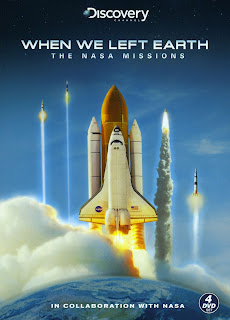 We have been using Sonlight's science curriculum in which DK's Eye Wonder: Space is a resource. Space is a huge and fun topic, so I decided to take a few detours. One of the tangents we are on is the life of Neil Armstrong.
We have been using Sonlight's science curriculum in which DK's Eye Wonder: Space is a resource. Space is a huge and fun topic, so I decided to take a few detours. One of the tangents we are on is the life of Neil Armstrong.We started with an excellent little biography called Who Was Neil Armstrong? It had a lot about the man of course, but a lot about the space program, and the history of the US at the time, too. It was just right for kids - informative, straight-forward, and yet insightful, too. We ended up talking about the Korean War, JFK, the Cold War, and Communism.
After we finished the book, we watched When We Left Earth: The NASA Missions, Episode 3: Landing the Eagle. It is told by the actual people involved - astronauts, engineers, and their wives.
I'm so glad I went this route instead of just showing the kids a video of the moon landing. The historical, emotional, and cultural context made a huge difference in their interest level!
Updated 3/25/2020.
No comments:
Post a Comment